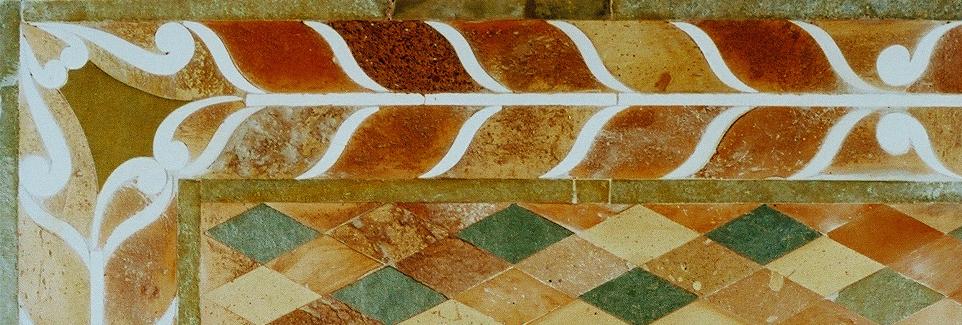











Floors made in Stone, in Terracotta, interlocked and weaved, meticulously placed into creative ensembles
Instead of being made up from small tesserae, Opus Sectile uses larger, specially-shaped elements in stone or tile. These are fitted together to create inlaid patterns or pictures on walls and floors.
Earliest examples of Opus Sectile work come from Ancient Egypt and Asia Minor. It reached an artistic height in Rome, from 4th- 6th Century, often used to create heroic images such as the chariot depicted in the basilica of the Roman Consul Junius Bassus..
Roman high fashion moved on and Opus Sectile moved East, becoming a feature of ornate Byzantine churches. It was not forgotten in Europe though, and by 12th Century, Opus Sectile techniques had become part of the vast repertoire of mosaic skills used by the Roman Cosmati family. Today, it is still practised by a very few specialist craftsman.

Composition comprising of inlaid antique reclaimed yellow terracotta and volcanic stone. more..

Marble Opus Sectile Pavement with border
White Marble polished to an egg-shell patina encrusted with a mosaic border more..

Terracotta Opus Sectile Pavement
Finely sliced and assembled terracotta pieces polished to an egg-shell patina more..

Stone and Cotto Rhomboid pavement with delicate & contrasting white border more..

Verdemarina Cotto & Crescent Border
Stone and Cotto Rhomboid pavement with connecting Crescent border more..

Flowers inlaid into a rustic, rugged and interlocking Roman volcanic background more..
By Appointment
DE FERRANTI
South Park Studios - Suite 10
88 Peterborough Road, London SW6 3HH
United Kingdom